See 10 of the best eco-friendly insulation material for your loft, walls and garden sheds.
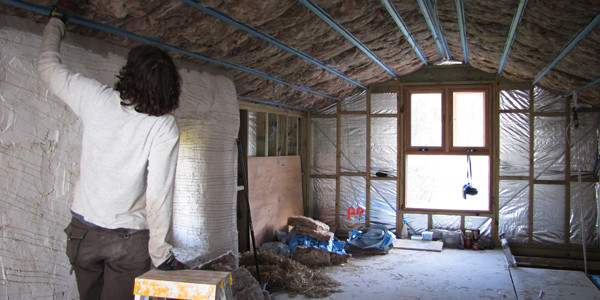
With the tackling of climate change being on the top of many people’s agenda and the sharp increase in energy prices, homeowners are looking at ways in which they can do their bit.
Perhaps one of the easiest ways to reduce these costs is to ensure that there are adequate levels of insulation in your home. Insulating helps to regulate the temperature in the house, increase the warm airflow, and reduce energy bills.
According to the Energy Savings Trust with poor or no insulation, it is estimated that a third of heat can escape from uninsulated cavity walls and an estimated 25% of heat can be lost through uninsulated lofts and out the roof.
So, what are the best insulation materials for your house? Some commonly used insulation materials include Fibreglass, Mineral Rockwool, plastic bottles and foil insulation.
However, these are just a few and there are other insulation materials you can use for things like lofts and walls. Keep reading for 10 of the best environmentally friendly insulation materials.
Contents:
- Effects of Poor Insulation
- Fibreglass
- Mineral Rockwool
- Plastic bottles
- Foil Insulation
- Loose-Fill Cellulose – Newspaper
- Recycled Cotton
- Straw
- Hemp
- Sheep’s wool
- Popcorn
- Key Takeaways
Effects of poor insulation
If your property has poor insulation temperature variations from one room to another, warm air going up and out the property escaping through windows and roofs is a common issue.
Despite the heating being cranked up and bellowing out, poorly insulated houses can result in cold damp interior walls, floors and ceilings which leave you shivering and uncomfortable. Long-term, damage can be sustained to the structure of a building with poor insulation, with increased and often costly issues with mould, condensation, and dampness.
A lot of these issues can be easily remedied by ensuring your insulation is up to standard, with the added benefit of reduced energy consumption and carbon emissions being released adding to the climate catastrophe.
But what are the best types of insulating materials for your house and can these be environmentally friendly to not only keep you warm but reduce your energy usage and lower your bills and help the environment?
1. Fibre Glass

The most common and perhaps the cheapest insulation type is Fibre Glass. Often found as blanket insulation that can be rolled out between your loft joists.
Whilst this may contain between 40% – 60% recycled glass content, the fibres themselves can be classed as hazardous, often an irritant, being linked to eye, skin and respiratory tract irritations through contact with the skin or breathed into the lungs.
Older types of fibreglass may also contain asbestos fibres so care should be taken when disposing of these. As well as the hazardous fibres, the process of production is energy-intensive, so this is probably one of the least environmentally friendly products despite having quite a high recycled material content
2. Mineral Rockwool Insulation
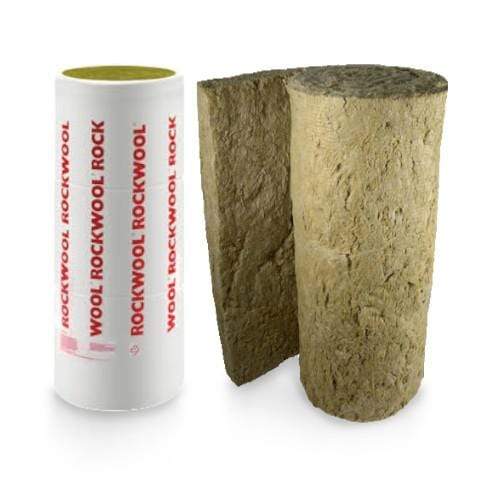
Like fibreglass, Mineral Rockwool Insulation comes in either blanket, slab or board form and is made from woven synthetic fibres and a high recycled content of molten slag industrial waste or as it is classed “mineral rock”. This alongside the chemicals it contains makes it onto the lower end of the spectrum of environmentally friendly products available.
However, one of the largest and leading manufacturers of both Mineral Rock and Fibre-Glass Insulation is Knauf Insulation (Knauf Insulation.com).
This leading company is working hard to reduce its carbon footprint, improve its compression technology, reduce the number of vehicles on the road and use less plastic packaging in a bid to reduce its carbon footprint and make their products and processes better for the environment. So we shouldn’t write these products off just yet.
3. Plastic Bottles – Supasoftinsulation
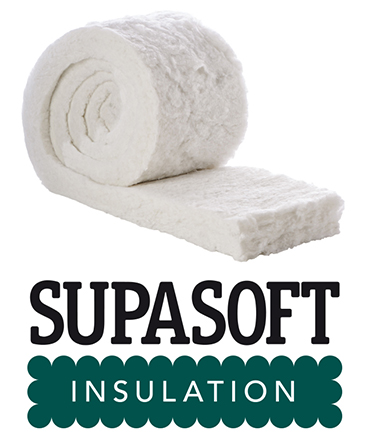
In comparison, a relatively new product on the market, offering a similar technique of blanket insulation considered to be one of the best loft insulation and suitable for insulating between and over rafters, used in walls and floors contains 100% recycled polyester and is made almost entirely from recycled plastic bottles.
Indeed, the manufacturers say it takes an average of 12,000 waste plastic bottles to produce enough Supasoft to insulate a typical loft. That’s 12,000 plastic bottles that would otherwise have been buried in landfills, incinerated or left to litter the environment.
It’s safe to handle and can be recycled or safely disposed of at the end of its life, although with the manufacturer claims that it is designed to last the life of the building in which it is installed, there should be little to nothing to be recycled, providing long-lasting results for the environment and your pocket
4. Foil Insulation
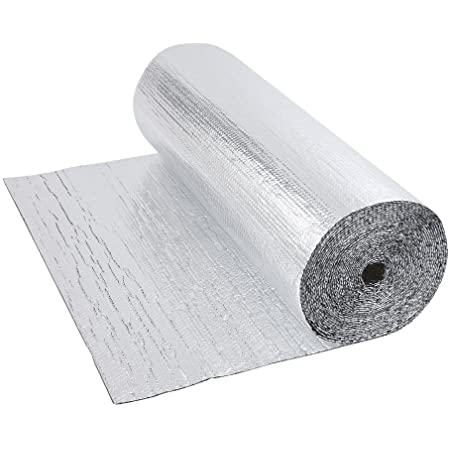
Another product with a lifespan of some 50 + years and made from up to 40% recycled materials making a pretty impressive environmentally friendly product is foil-covered insulation. These products have improved in recent years and with new technology and materials, advancements are being made every day.
From foil-covered Insulation Boards to more flexible foil and wadding blankets. Foil Insulation has multiple uses and can be used in multiple places and ways.
From being used as vapour barriers in cavity walls to thermal blankets in pitched roof insulations. To campervan conversions and for sliding down behind your radiators to reflect the heat back into the room, this futuristic-looking insulation is now of use in the present day for a multitude of uses and is considered one of the best roof insulation materials.
With the benefits of being generally very light, it’s easy and safe to handle, store and install. There is no loss of thermal performance and helps to provide lower energy bills.
5. Loose-fill insulation – Thermofloc
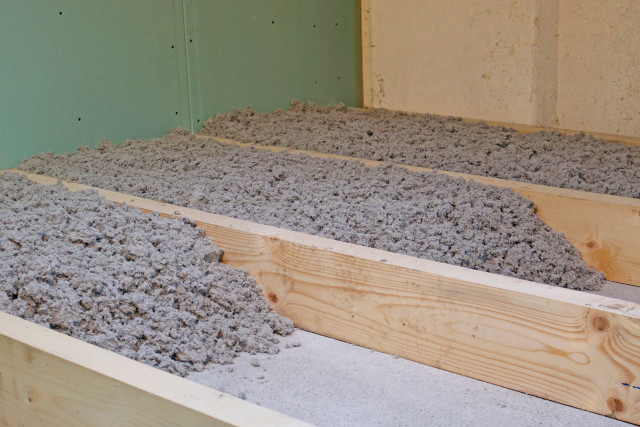
From futuristic to filling, the next type of environmentally friendly insulation looked at, is loose-filled Cellulose Insulation. This is, as the name suggests, composed of a large quantity of loose-filled fibres from any cellular plant source, although most common are predominantly 75 – 85% recycled paper fibre making this one of the highest recycled and eco-friendly ingredient insulations.
Loose-fill insulation is often packaged in a bale format, that can be installed and spread by hand or for pricier insulation can be blown into your loft space, only recommended from reputable installers, this is able to fill all cracks and crevices, whereas conventional blanket insulation can be fiddly to cut and get to.
Related articles:
- Best Wall Insulation For Summer Houses
- 4 Best Portable Heaters For Small Rooms 2022
- What Is The Most Environmentally Friendly Decking Material?
6. Recycled Cotton Insulation
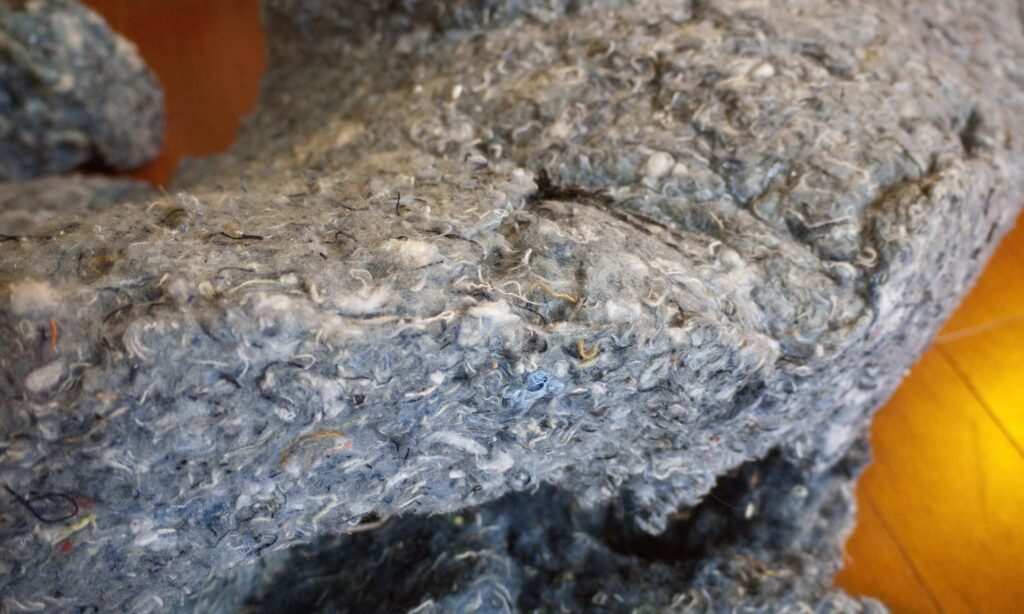
Following on from utilising materials that would otherwise be wasted, another material that has been used since the 1990s for insulation is Cotton, specifically the fabric wasted from the production of jeans. This has been recycled and re-utilised as another building insulation product.
Although using the waste material makes this a fairly high environmentally friendly product, the effectiveness of the material and its ability to absorb moisture does have an impact on the effectiveness of the insulating properties, and the pros and cons should be weighed up before using this product.
7. Straw Bales
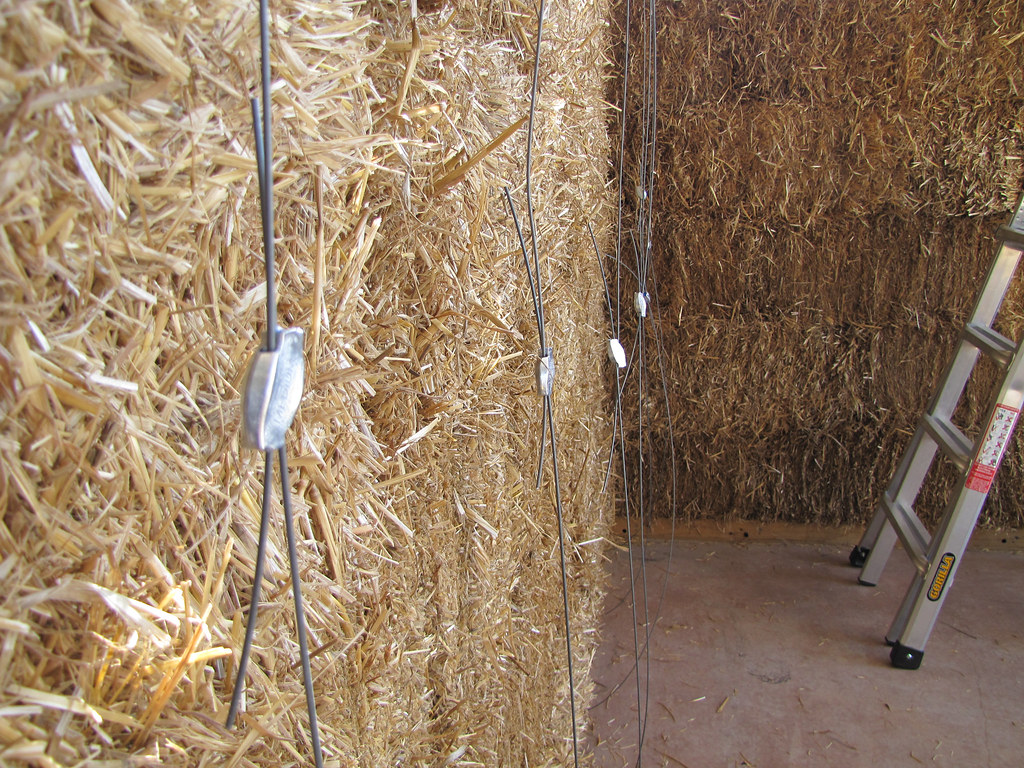
Although not so suitable for post-build insulation, a good insulating material that is environmentally friendly and has been used for decades is Straw. The little pigs were right in their thoughts of building their homes of straw. This natural material has excellent insulation properties.
Often a waste by-product as it has very little nutrient value, this is often an overlooked product. Indeed, the Food and Agriculture Organization (FAO) of the united nations estimates that about 800 – 1000 million tons of rice straw are produced per year with similar volumes for wheat worldwide, and rather than many farmers burning their leftover straw worldwide, these could be utilised into panels for insulating properties around the world
8. Hemp
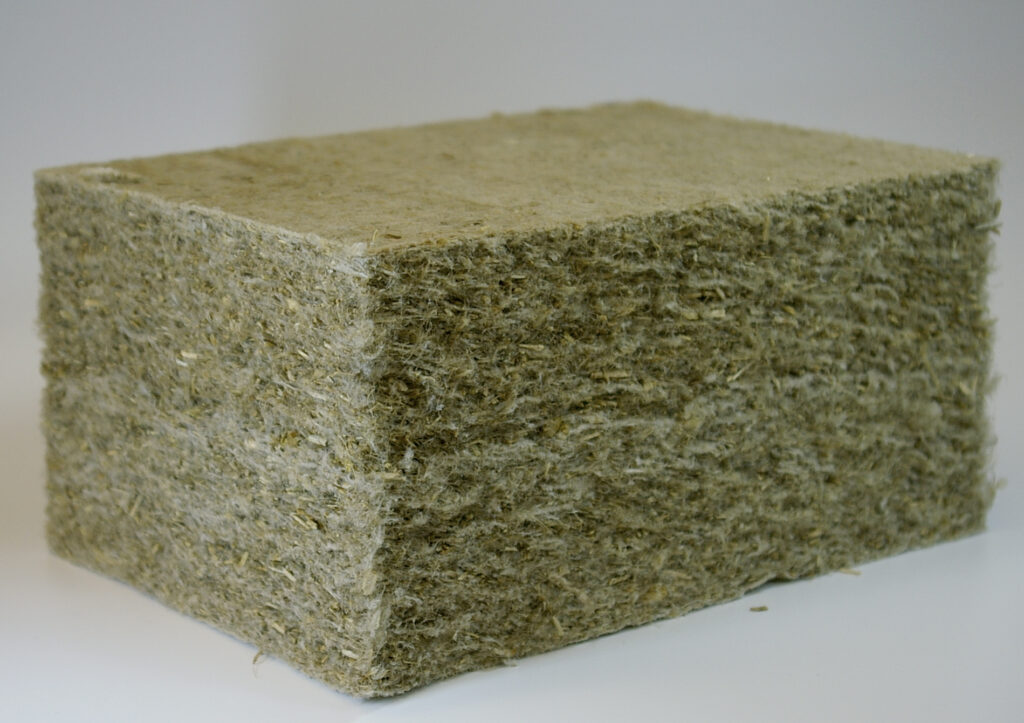
Another green product that is gaining momentum in the construction and building industry is hemp. Only being on the market since 2018, this is a new product that is gaining ground. As a crop this is a sustainable source and very eco-friendly, as a product it is produced into Batts, which are thick and compressible, this is one of the best insulations for walls, ceilings, and floors.
New products that have been developed contain up to 90% hemp and 10% polyester binder with high recycled content and is a safe, efficient, and durable alternative insulation. With its breathable fibres and hygroscopic nature, this is one environmentally friendly product to be watching for in the future.
9. Sheep’s Wool

Perhaps one of the most natural eco and environmentally friendly products available, is natural sheep’s wool, used to pad out between rafters and wall struts, either in loose-fill or blanket, slab type insulation. This provides one of the best house insulation materials.
Indeed, this wins the eco-friendly awards hand down, or should that be hooves down? It’s renewable, sustainable, breathable, it has the added benefit of absorbing chemicals and toxins in your home, locking them into the fibres to literally improve air quality.
Sheep’s wool is naturally resistant to mould and mildew by moderating the moisture and due to the naturally present lanolin being bug and insect resistant.
As well as providing good thermal and acoustic insulation and its naturally fire retardant, the benefits seem to be endless with this product.
With more demand, the sheep will thank you for it!
10. Popcorn Insulation Board
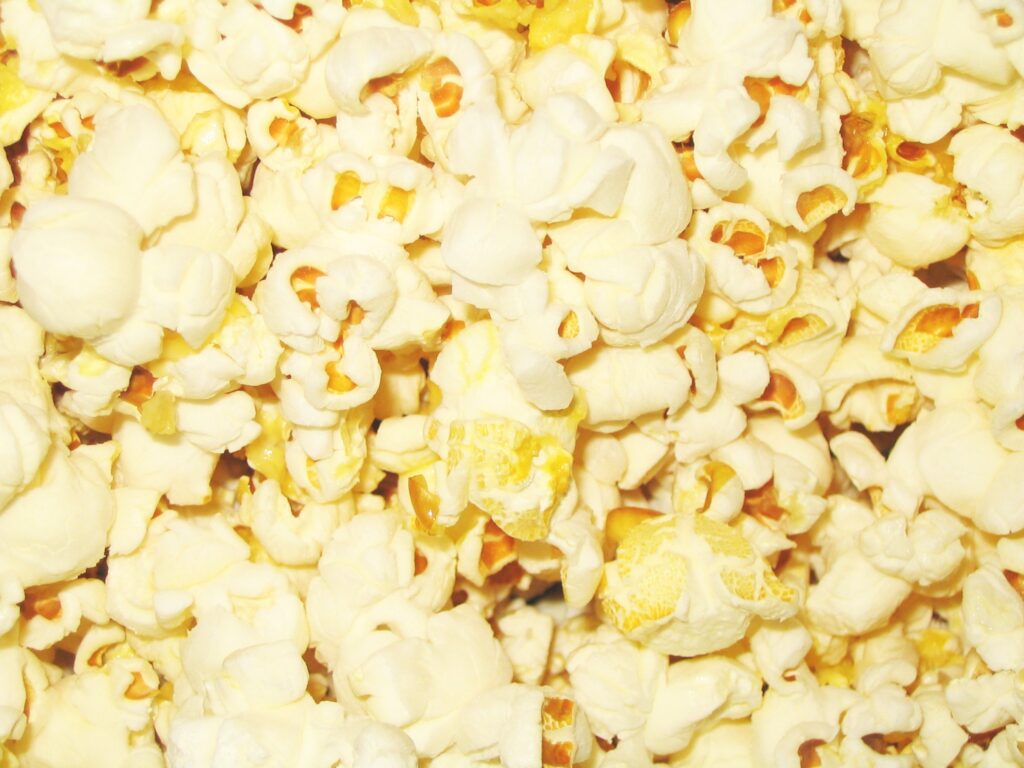
So this leads us to our last on the list, Popcorn….. Yes, this very new technology has been developed by scientists at the Gottingen University and has barely left the drawing board, with the signatures still wet on the patents, this looks to be an exciting innovation in the development of Insulation Boards. Providing good thermal insulation and fire protection, a natural material that is plant-based and environmentally friendly and sustainable.
Described by Professor Alireza Kharazipour, the head of the research group, “ The group has managed to develop a process by which insulation boards made of “granulated” popcorn can be produced.” “This new process, based on that of the plastics industry enables the cost-effective production of insulation boards at an industrial scale. Ensuring natural insulation materials are no longer just niche products. “
Key takeaways
So, as you can see, technology is ever-changing and with better attitudes to reusing and recycling our waste materials, even everyday items that are discarded like our plastic bottles and newspapers can be reutilised into effective insulation for our houses.
Age-old techniques are still in the running utilising the more natural raw materials like straw and sheep’s wool and the fewer processes that it goes through makes it an ideal environmentally friendly insulation.
I for one, look forward to seeing what innovative ideas companies and scientists will continue to develop to turn not only existing products and the companies that supply the products more environmentally friendly like Knauf Insulation, but also to see what the new insulation products of the future will be and how these can keep my house warm and toasty without having to destroy the environment and my bank balance to do it.

